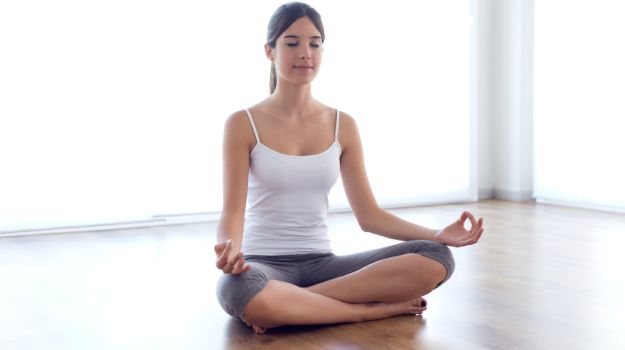Kapalbhati Pranayam:Yoga
Kapalbhati Pranayam: How to Do It, Steps and Benefits

"Yoga is not just repetition of few postures - it is more about the exploration and discovery of the subtle energies of life." - Amit Ray, Yoga and Vipassana: An Integrated Life Style
These "subtle energies" can be felt just by sitting in silence, amid lush green trees, focusing at the center of your forehead with your eyes closed. I am a huge fan of yoga, a great believer and propagator of its efficacy. There is no better way to unite the trinity of body, mind and soul as practicing yoga. It is interesting how one can evolve - both in mind and body - just by practicing stillness and immobility. Immobility, as you get into a pose and aim to hold it for the longest that your body can handle and in the process you healand become stronger. A Delhi-based fitness expert and Yoga guru Seema Sondhi once shared with me the importance of breathing in yogic practice. According to her, deepbreathing, when performed with a mix of asanas, heals the body from within fixing all internal imbalances.
Talking of immobility, breathing and fixing imbalances, kapalbhati is one such asana which requires zero effort and gives great returns. "Kapalbhati is a shat kriya, which means it's a form of a cleansing technique that removes toxic air and toxins from the body," noted a Delhi-based Yoga expert, Anju Kalhan. This is not much of a posture but more of an exercise as it involves you sitting still in a yogic posture while the breathing exercise takes over the game.
To break it down, 'Kapalbhati' comes from the word 'Kapal' (forehead) and 'Bhati' which means 'to shine'. It is believed that the regular practice of the exercise brings a naturalglow on the face.

Kapalbhati and its Benefits
Kapalbhati is said to have distinct mental, physical and spiritual benefits -
1. The breathing technique involves "active exhalation and passive inhalation". During inhalation the stomach sinks in and vice-versa during exhaling. This stomach movement is therefore beneficial for the muscles around it, including that of the liver and pancreas. Theblood flow to these areas also increases.
2. It aids digestion and removal of acidity and gas related problems.
3. Regular practice of kapalbhati is also beneficial for belly fat loss.
4. The technique involves forceful breathing which strengthens lungs and increases its capacity.
5. "Practicing Kapalbhati helps in removing blockages in the heart and lungs," said Anju.
6. It also increases blood supply to various parts of the body.
7. It activates the body and removes lethargy. Facial radiance is a natural benefit as the name suggests.
8. It activates the brain cells and improves memory and concentration power.
9. Kapalbhati is great for focus and checks forgetfulness.
10. "Kapalbhati has spiritual paybacks as well. It activates the chakras in the body and helps in achieving a higher, greater awakening," shared Anju.
How to get into the pose
Kapalbhati can be done either in the regular yogic posture with crossed legs and straight back as well in vajrasana. For those who suffer from back issues, the technique can be done by resting against the wall or even lying straight on the floor or bed. While maintaining the posture, force your breath out in shorter intervals. Beginners can practice 20-30 breath pumps going up to 200.
Kapalbhati kriya should always be followed by subtler breathing practices such as anulom vilom, also known as alternate nostril breathing. Those who suffer from lower back issues, high blood pressure or headaches should perform the kriya under supervision.
"It is generally done early morning. Otherwise you can practice it three hours after foodconsumption. It is recommended that you practice kapalbhati before long hours of meditation for greater concentration and oneness within," concluded Anj
consumption. It is recommended that you practice kapalbhati before long hours of meditation for greater concentration and oneness within," concluded Anju
consumption. It is recommended that you practice kapalbhati before long hours of meditation for greater concentration and oneness within," concluded Anju


Comments
Post a Comment